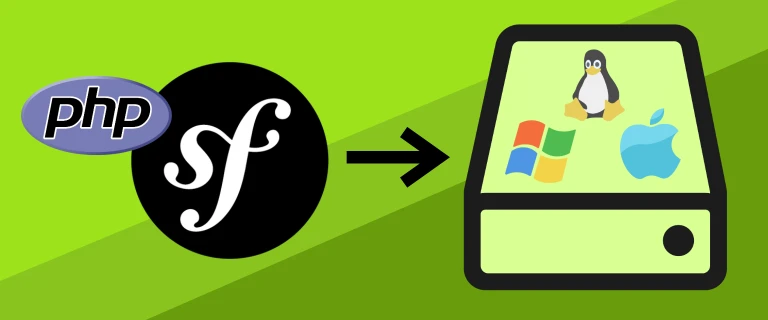Installing PHP and Symfony CLI Locally

The Symfony CLI is awesome for developing Symfony applications locally! It enables you to run a local web server, integrates with Docker containers for services like a database, and provides many other features to streamline your development workflow.
Here at SymfonyCasts, we use it for all our Symfony courses so to best follow along, you'll want to install it as well.
It's mostly batteries-included, but it does need PHP available. The official Symfony recommendation is to install PHP locally and natively on your computer. Let's look at how to install PHP and the Symfony CLI on different operating systems. We'll also make sure extensions for the most common databases (MySQL, SQLite, PostgreSQL) are installed.
To get started, follow the instructions below for your operating system:
Once you have PHP and the Symfony CLI installed, verify your installation.
macOS (Homebrew)
First, ensure you have the Homebrew package manager installed (if it isn't already).
Homebrew PHP
Now, install PHP:
brew install php
Tip
This will install the latest stable version of PHP. If you want a specific version, check the Homebrew PHP formula. Under "Other versions" you'll find available alternate versions. For example, to install PHP 8.3, run:
brew install php@8.3
Homebrew PHP Extensions
Homebrew's PHP formula includes many extensions out of the box (including common database extensions). If you need additional extensions, use PECL (PHP Extension Community Library), which was installed with PHP. For instance, to install the Redis extension, run:
pecl install redis
Homebrew Symfony CLI
There are several methods to install the Symfony CLI, since we already have Homebrew installed, let's use it to install the Symfony CLI:
brew install symfony-cli/tap/symfony-cli
You should be ready to go on your Mac! Verify the installation below.
Ubuntu/Debian Linux (apt)
In Ubuntu and Debian, you can install PHP using the apt package manager but the default package repository probably
won't have the latest PHP version available. The 3rd-party ondrej/php repository
is a popular choice that provides the latest PHP versions and extensions.
APT PHP
First, add the ondrej/php repository to your system by running:
sudo add-apt-repository ppa:ondrej/php
sudo apt update
To install PHP 8.4 and some common extensions, run:
sudo apt install php8.4 php8.4-cli php8.4-fpm php8.4-common php8.4-curl php8.4-mbstring php8.4-xml php8.4-zip php8.4-gd php8.4-intl php8.4-bcmath
To install the common database extensions, run:
sudo apt install php8.4-mysql php8.4-pgsql php8.4-sqlite3
Note
Replace 8.4 with the version you want to install. For example: php8.3 php8.3-cli ... for PHP 8.3.
APT PHP Extensions
For additional PHP extensions, these are also available via apt. For example, to install
the Redis extension, run:
sudo apt install php8.4-redis
APT Symfony CLI
There are several methods to install the Symfony CLI, since we used
apt to install PHP, I'd suggest using that method in the link above to install the Symfony CLI as well.
You should be ready to go! Verify the installation below.
Windows (WSL)
Running PHP natively on Windows (as an exe) is possible, but can be tricky. I recommend using the
"Windows Subsystem for Linux" (WSL) to run Ubuntu. It isn't in a container or other virtualization tool,
it runs directly on Windows! Follow the
WSL installation guide
to get setup with WSL and Ubuntu.
Now, follow the Ubuntu/Debian Linux (apt) section above to get PHP installed!
Verify PHP/Symfony CLI Installation
Check your PHP version by running:
php -v
Check your Symfony CLI version by running:
symfony version
You can run PHP through the Symfony CLI. Ensure the following matches your PHP version above:
symfony php -v
For the common database extensions, ensure they are all installed by running:
symfony php -m | grep pdo
You should see the following output:
pdo_mysql # MySQL extension
pdo_pgsql # PostgreSQL extension
pdo_sqlite # SQLite extensionFinally, to ensure that you're ready to go with Symfony, run:
symfony check:requirements
Tip
When this command is run outside a Symfony project directory, it will check the general requirements for Symfony applications. This includes PHP version, required extensions, and other system checks. If run inside a Symfony project directory, it will perform additional, project-specific checks.
Ok, you should be all set up!
Happy Installing! 🚀
We'd like to keep this as a live document so if you have any issues or suggestions, please comment below or click the Edit button above to propose changes.
Comments

"Houston: no signs of life"
Start the conversation!